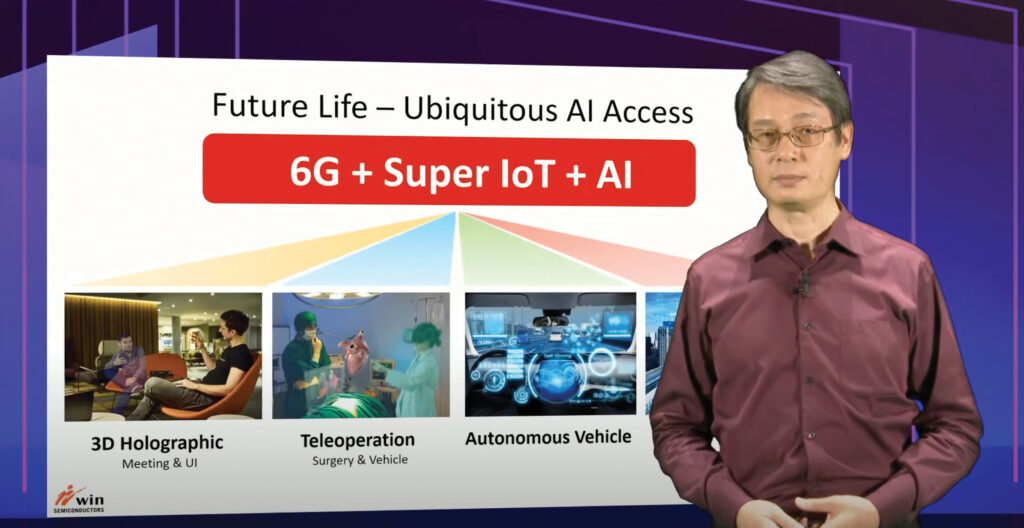ASIA ELECTRONICS INDUSTRYYOUR WINDOW TO SMART MANUFACTURING
Compound ICs to Set Stage for More Innovations
Compound semiconductors will play pivotal role not just in present but in future connected life. They will be critical as well in enabling mass intelligent devices brought about by the fusion of the sixth-generation (6G) communications devices, which is expected to precede the up-and-coming 5G, artificial intelligence (AI), and internet of things (IoT).
In his speech at the COMPUTEX Forum on Critical Technology, Yu-Chi Wang, Ph.D., Vice Chairman at WIN Semiconductors Corp., said in the future, there will be a thin line that will divide the real and digital world and the fusion of 6G, IoT, and AI will bring forth diverse applications in many fields, particularly in entertainment, medicine, and automotive to achieve the ubiquitous AI access.

“All of these (innovations) require extremely high data transmission connectivity and the massive amount of smart sensor devices and super computing power seamlessly integrated to achieve the goal,” said Wang.
WIN has become the first pure-play 6-inch gallium arsenide (GaAs) foundry and has three advanced GaAs wafer fabs were established to manufacture cost-effective, high speed, and high quality GaAs MMIC’s (monolithic microwave ICs) and RFIC’s (radio frequency ICs). WIN provides dedicated foundry services to design houses and integrated device manufacturers.
Enhance Enabling Technologies
Among the basic compound semiconductors such as gallium nitride (GaN), indium phosphide (InP), and GaAs, GaN is the most representative. Wang said for integrated circuit application, compound semiconductor has advantage for high speed that is five to six times faster than silicon compound.
Another advantage of compound semiconductors is, they can emit light and can absorb light more efficiently, characteristics that are absent in silicon. These enable compound semiconductors to provide wide range of frequency wavelength spectrum from infrared visible light all the way to ultraviolet light.
Because of this, Wang said compound semiconductors are present in everyday life, such as in smartphones, which is used as power amplifier to transmit signals to base station, and even in Wi-Fi routers and optical fibers, where compound semiconductors act as light emitting source and interface IC. They are also widely used as backlight in displays and in satellite base stations and communication radars.
Because of its innate characteristics, Wang said compound semiconductors contribute in enhanching enabling technologies in smart sensing devices, power efficiency, and ubiquitous internet access.
“Compound semiconductors played pivotal role to advance future life. It is believed we are still in initial stage for another disruptive growth on compound semiconductors. This is driven by innovative emerging application, which require enormous frequency bandwidth and high-performance sensors. Compound semiconductors will play increasingly important role in our life,” he added.




